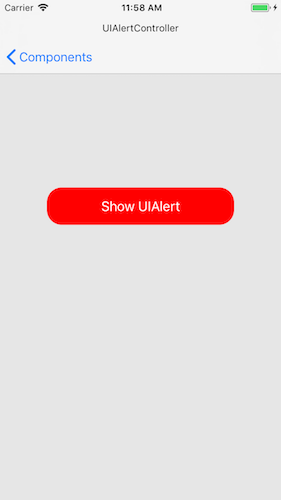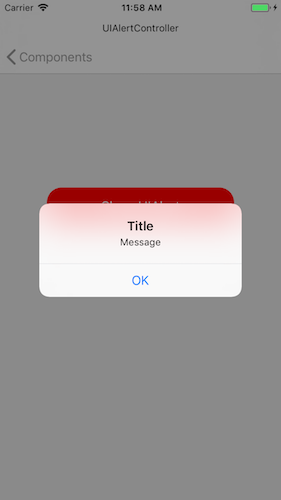UIAlertController 사용하기
Show UIAlert라 써져있는 버튼을 누르게되면 AppDelegate에 만들어놓은 showAlert 함수를 통해 UIAlertController를 생성합니다.
AppDelegate에 만들어놓은 이유는 모든 ViewController에서 접근이 가능하기 때문입니다.
Title, Message, ActionButton의 Title, ActionButton의 타입 등을 정할 수 있습니다.
액션 이후의 처리가 필요하면 액션의 completion에서 처리하면 됩니다.
아래 스크린샷과 소스코드를 비교해보시면 좀 더 이해하기 편할겁니다.
궁금하신점은 댓글로 달아주세요.
해피코딩 :)
Preview


Source
Github
https://github.com/calmone/iOS-UIKit-component
Reference
- UIAlertController
https://developer.apple.com/reference/uikit/uialertcontroller



